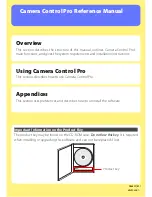
CHAPTER 2
44
Making the Switch from PageMaker to InDesign
Book, index, and TOC conversion issues
Note the following:
•
InDesign ignores Booklists when opening
PageMaker publications. If you want to open all
the publications on a Booklist together, run the
Build Booklet plug-in in PageMaker with a
layout of None selected so that the booked
publications are combined into one. Note that
text blocks and frames will no longer be
threaded.
•
Index entries from a PageMaker publication
appear in the InDesign Index palette. Text with
cross-references that use the See Herein or See
Also Herein option are mapped as See or See
Also.
•
Table of Contents text converts as a Table of
Contents, with PageMaker TOC Style available
in the style pop-up menu in the InDesign TOC
dialog box.
Linking and embedding conversion issues
Note the following:
•
Text and graphics links are preserved and
appear in the Links palette.
•
If InDesign cannot locate the original link to a
graphic, a warning appears asking you to repair
the link in PageMaker. For more information on
embedded graphics, see “Linking and
embedding graphics” on page 35.
•
InDesign does not support OLE (object linking
and embedding). Consequently, when you open
files that contain OLE graphics, those graphics
will not appear in the InDesign document.
Color and trapping conversion issues
Note the following:
•
Colors are converted exactly to InDesign colors.
PageMaker HLS colors are converted to RGB
colors, and colors from other color libraries are
converted based on their CMYK values.
•
Tints are converted as percentages of the parent
color. If the parent color isn’t in the Swatches
palette, it’s added during conversion. When an
object with a tint is selected, the parent color is
selected in the Swatches palette, and the tint
value appears in the pop-up menu.
•
Color profiles for PageMaker files are converted
directly. All Hexachrome colors are converted to
RGB values. Profiles that are not ICC-compliant
are replaced using the default CMS settings and
profiles you specified for InDesign.
•
All strokes and lines (including paragraph
rules) are converted to the default stroke styles
they most closely resemble. Custom strokes and
dashes are converted to custom strokes and
dashes in InDesign.
•
InDesign does not support screen patterns or
angles applied to TIFF images in Image Control;
it drops these from imported TIFF files.
•
When Auto-Overprint Black Strokes or Fills (or
both) is selected in the Trapping Preferences
dialog box in PageMaker, the setting carries over
to InDesign, but Overprint Stroke or Overprint
Fill is deselected in the Attributes palette.
For information about other PageMaker
conversion issues, check the support documents
on the Adobe Web site.
















































